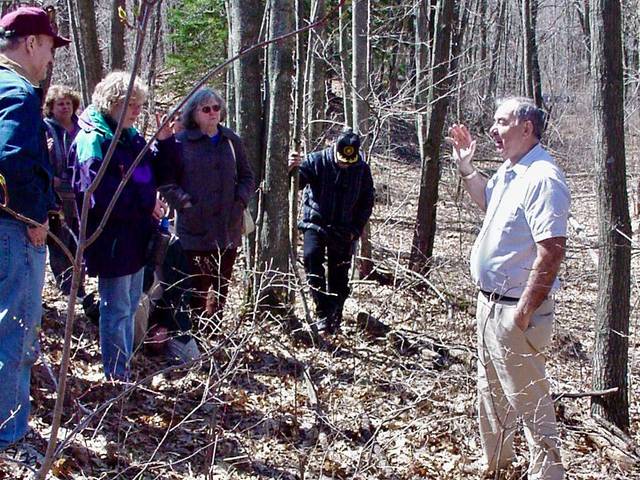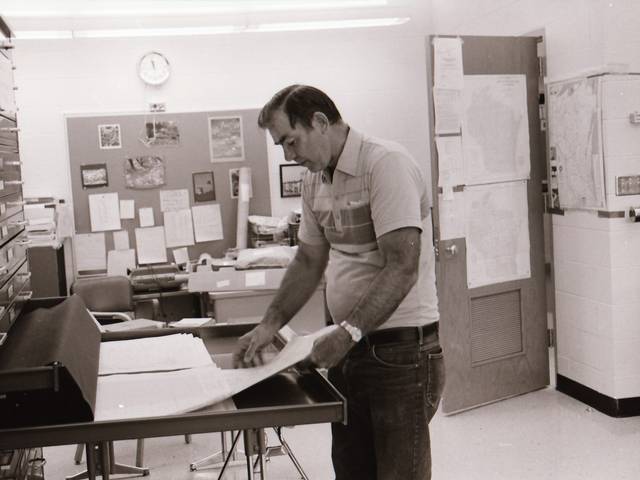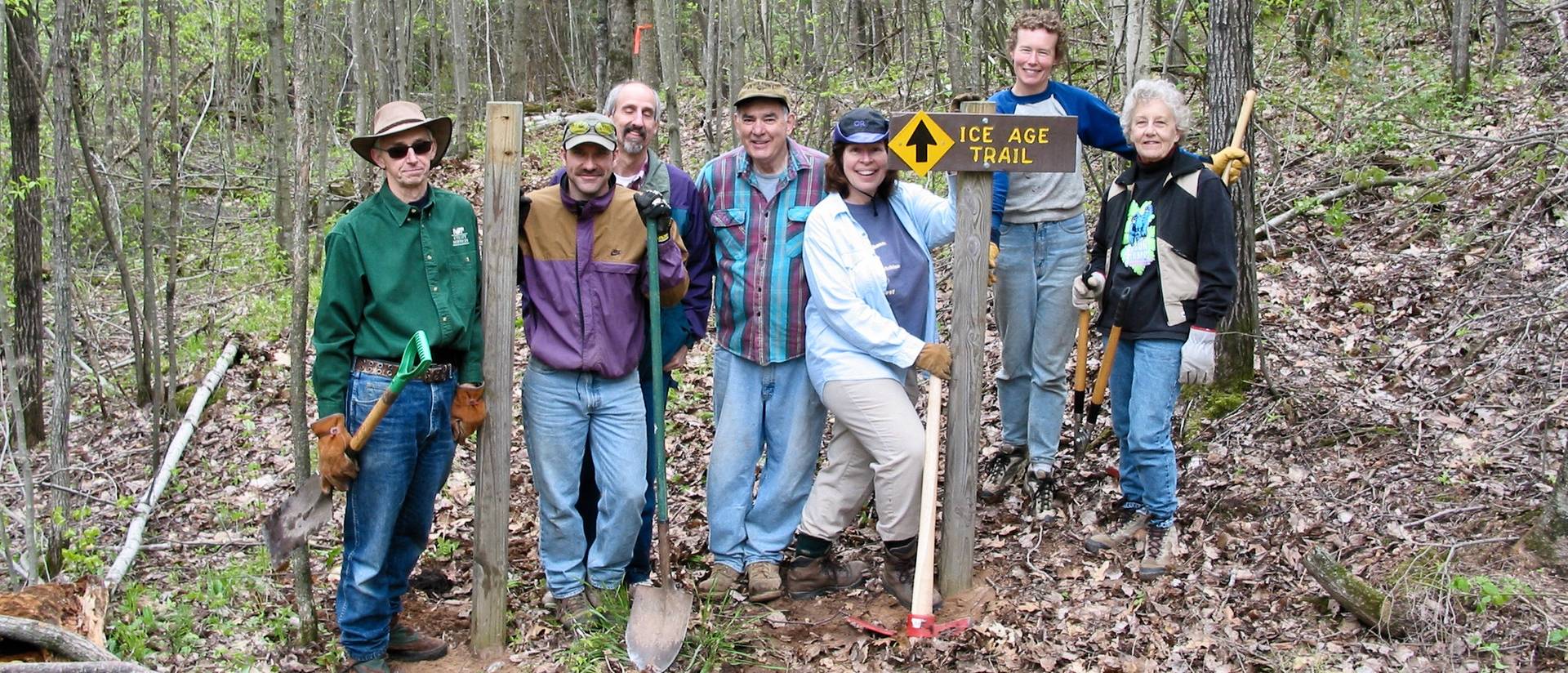Photo caption: Dr. Adam Cahow, center, was a member of the UW-Eau Claire faculty from 1965 until his retirement in 1996.
Dr. Adam Cahow would have cherished the recent designation of the Ice Age National Scenic Trail as one of the nation’s newest national parks, according to a family member of the former University of Wisconsin-Eau Claire professor of geography.
Cahow, who was a member of the UW-Eau Claire faculty from 1965 until his retirement in 1996, helped with the planning and construction of the trail across Wisconsin for several decades. Cahow died in 2022.
“It was kind of his life’s work,” says his daughter Kirsten Cahow-Scholtes, a 2001 UW-Eau Claire graduate in hydrogeology and water chemistry. “He probably spent 40-plus years of his life working on the trail until he was in his 80s. He was just really passionate about developing the trail to help people understand geomorphology and the incredible glacial features that exist there.”

In December 2023, the Ice Age National Scenic Trail was one of three national scenic trails to become the country’s newest national parks. The designation means the Ice Age National Scenic Trail will have more opportunities for federal funding through the National Park Service, as well as national awareness.
“It was always his intention to have it developed as a cohesive trail throughout Wisconsin,” Cahow-Scholtes says. “The goal was to get it all connected so it would have more national significance, and to be able to protect it and maintain it in perpetuity.”
Much of North America was under a huge glacier about 15,000 years ago during the Ice Age, according to the National Park Service. The nearly 1,200-mile Ice Age National Scenic Trail was established in 1980 and follows the glacier’s edge with lakes, river valleys, gently rolling hills and ridges.
Cahow, who received his bachelor’s degree from UW-Eau Claire, taught courses in climatology, geomorphology and the physical geography of Wisconsin and the U.S. Cahow became interested in the trail’s construction in 1973 when the Ice Age Park and Trail Foundation asked him to be a trail chapter leader and help pick trail routes.
Cahow, who was a board member of the Ice Age Trail Council, often led hikes through sections of the trail and was a frequent speaker on the history and effects of the glacier on the regional and state landscape.
“When I was a little girl, we would take family trips on the weekend where he actually put us all to work — my three siblings and me — maintaining the trail,” Cahow-Scholtes says.

Cahow was recognized in the August 1977 edition of “National Geographic” magazine for his “dedication and pioneering of the Wisconsin Ice Age Trail,” according to a university news release that year.
“We’ve completed about 110 miles of this segment of the trail, with several UWEC geography faculty members and more than 100 UWEC students blazing the trail,” Cahow said in the news release.
Cahow had deep feelings for the trail and thought of it as more than a path carved out of the woods, according to the release. He was proud of the nearly 200 miles of trail from Lincoln County to the Minnesota border that he considered his part of the trail.
“The idea of the Ice Age captures people’s imaginations, which accounts for the popularity of the Ice Age Trail,” Cahow said. “The trail is valuable because it can be used, but it also is valuable for people just to know there is a wilderness available if they want to explore it.”
“Twenty to 30 years ago we took our resources for granted,” Cahow said in that interview nearly 50 years ago. “Now we know they are limited, and we’re beginning to treasure them.”

